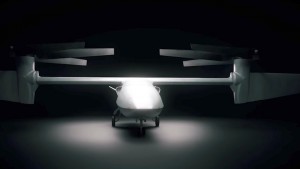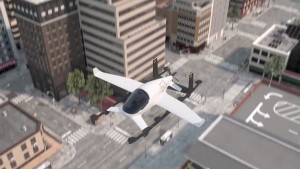Not to be pinned down by its continuing troubles here on the ground, Uber is pushing ahead with its flying taxi ambitions at its Elevate conference in LA this week. Among the news to trickle out of the event is a new deal with NASA, along with some flashy new concepts previewing what the aircraft could look like.
Uber first shared its plans for a flying taxi service back in 2016, and it is not alone in harboring such ambitions. Boeing, Airbus and a host of aviation startups are also vying for territory in this area, and despite the fact that everything rides on a yet-to-be proven technology, a lot of money and resources are going into such efforts.
For its part, Uber imagines using vertical takeoff and landing (VTOL) aircraft to carry people around urban centers. These aircraft would be electric to keep noise and carbon emissions to a minimum, have either two or four seats and take passengers on trips of up to 60 miles (96 km) between dedicated launch pads called Skyports. These would be piloted to begin with, and then fly on their own once autonomous technologies mature.
Were such a service to get off the ground, it would mean a lot more air traffic for urban centers, and that’s where NASA comes in. The agency has been working on traffic management systems for unmanned aircraft like drones for a few years now, and last year signed an agreement with Uber to do the same for flying taxis.
This could mean that you have a low-speed channel of airspace reserved for hobbyists flying video drones, for example, with a high-speed channel above that for delivery drones and then another for flying taxis. Uber has previously said that its flying taxis will fly below 10,000 ft (3,000 m).
Initially, the partnership between NASA and Uber centered on general modeling and simulations, but the pair have now signed another deal that applies this to real-world airspace. Under the new agreement, Uber will share its plans and data around an urban aviation ride-sharing network, which NASA will combine with its airspace modeling to simulate light aircraft traffic around Dallas Fort Worth International Airport during peak travel times.
“The new space act agreement broadening Uber’s partnership with NASA is exciting, because it allows us to combine Uber’s massive-scale engineering expertise with NASA’s decades of subject matter experience across multiple domains that are key to enabling urban air mobility, starting with airspace systems,” said Jeff Holden, Uber’s chief product officer.
Meanwhile, Uber is using the Elevate summit to showcase some concepts of its flying taxis. As reported by Fast Company, one of these was an all-electric multi-rotor aircraft that uses stacked rotors to lift off vertically, but can travel at more than 300 km/h (186 mph) thanks to an airplane-like body.
Another was the first VTOL aircraft from Brazilian aerospace company Embraer, which takes more of a helicopter form and uses eight horizontal rotors to lift off vertically from building rooftops and launchpads.
Uber has signed on a number of partners to develop the aircraft for its Uber Elevate service. Another example is Virginia’s Aurora Flight Sciences, which has been developing electric propulsion technologies for VTOL aircraft for years, including a battery system for DARPA’s X-Plane. Last year it showed off a functioning model of what could become an Uber Elevate aircraft, with the agreement calling for 50 of them to be supplied to Uber by 2020.
As 2020 is the year that Uber plans to start demonstrations of its flying taxi service, beginning with pilots in Dubai, Dallas and Los Angeles, such a timeline does seem like a huge overreach at the moment … but hey, that hasn’t exactly stopped Uber before.
Check out the video below for a look at how Uber Elevate would work.
Source: newatlas
Ask me anything
Explore related questions
















